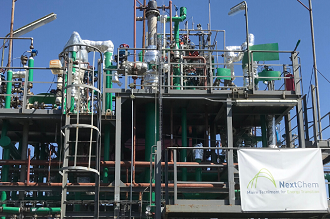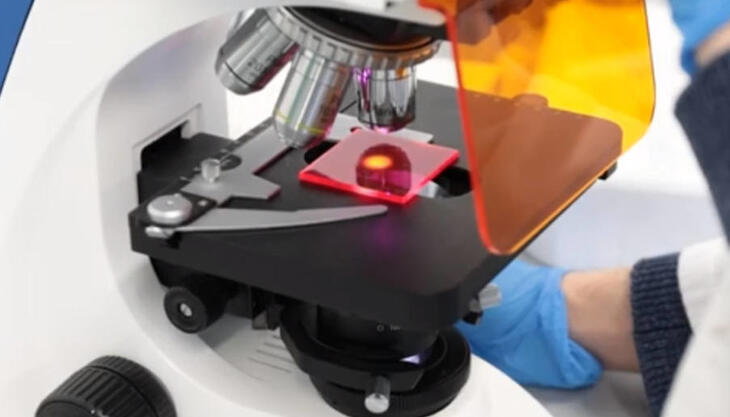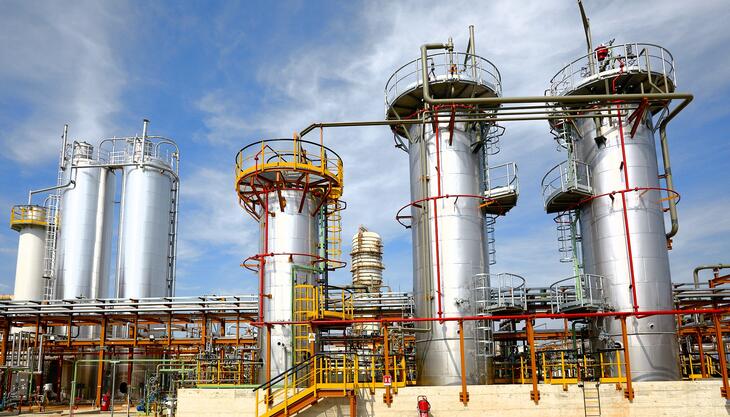Promoting circular ethanol production

The #CircularDistrict model of NextChem is enhanced with a new dimension: in addition to hydrogen and methanol derived from the chemical conversion of plasmix and non-recyclable dry waste, it will now be possible to obtain ethanol, an important chemical for sustainable fuels and disinfectant production.
NextChem and US carbon recycling company, LanzaTech signed an agreement to license the "Waste to Ethanol" process line. NextChem thereby expands its circular economy and chemical recycling technologies, adding circular ethanol technology to circular hydrogen and circular methanol production technologies (currently in the engineering phase), based on the chemical recycling of plastic and dry waste. The basic process is the chemical conversion of hydrogen and carbon contained in plasmix (non-recyclable waste from plastics separate collection) and RDF (Refuse Derived Fuel), from which a Circular Gas is obtained to be used as a base to produce various chemical products. With LanzaTech’s biological “syngas fermentation” technology, ethanol is produced by bacteria, transforming the Circular Gas at low temperature and low pressure, improving the overall sustainability profile of the process. This is an example of the bioeconomy in action, serving the circular economy and promoting decarbonization. NextChem will exclusively license this technology in Italy and, on a project basis, in some foreign markets.
Circular ethanol derived from this process can be blended with gasoline displacing fossil inputs with recycled carbon, lowering the fuel’s carbon footprint. When produced from biological wastes and residues, 40% of the circular ethanol can be considered as "advanced “under the EU Renewable Energy Directive. Ethanol (which is totally imported by Italy), is another important intermediate product for the production of a series of chemical components, such as ethyl acetate, a valuable solvent for car paints, which Europe has to import, and alcohol used as a disinfectant. By making these products from waste derived ethanol, circular models of consumption are promoted.
NextChem technological integration is among the most relevant innovations in the circular economy sector, as it allows the production of products such as hydrogen, methanol, ethanol, which are chemical "building blocks", sourced from the currently non-recyclable waste, avoiding fossil sources and reducing climate-changing emissions while increasing the share of recycling.
“We are expanding our technology portfolio from a strategic perspective: our circular district model and our waste-to-chemicals technology platform are the answers both to the problem of reliance on foreign supplies of chemical products, and to the problem of recovery of currently non-recyclable waste fractions, and to the problem of decarbonization”, says Pierroberto Folgiero, CEO of NextChem and Maire Tecnimont. “NextChem aims to provide the market with technological solutions to completely replace traditional fossil-based chemistry with biochemistry and waste chemistry. We want to re-build coal chemistry, excluding coal entirely: an extremely ambitious goal, which today has become possible”.
“We must accelerate the transition to an inclusive circular bioeconomy in harmony with our natural world,” said Jennifer Holmgren, CEO of LanzaTech. “We have to realize that waste is a choice. Everything can and should be reused, just as everything is reused in nature. The Circular Economy is here to stay and NextChem’s circular district model is a great example of how we can build resilience in our economy by reusing all the carbon we can.”



















